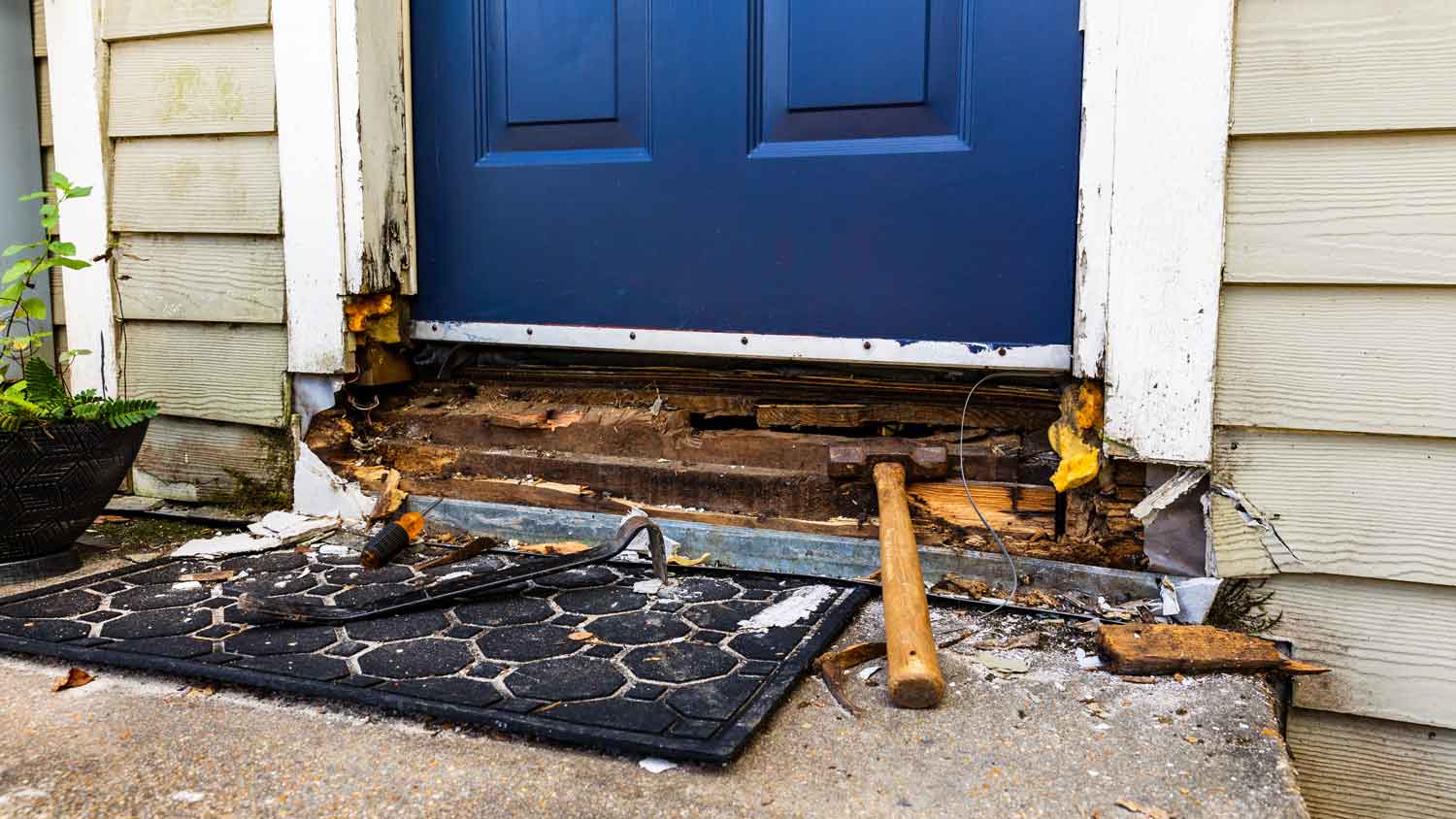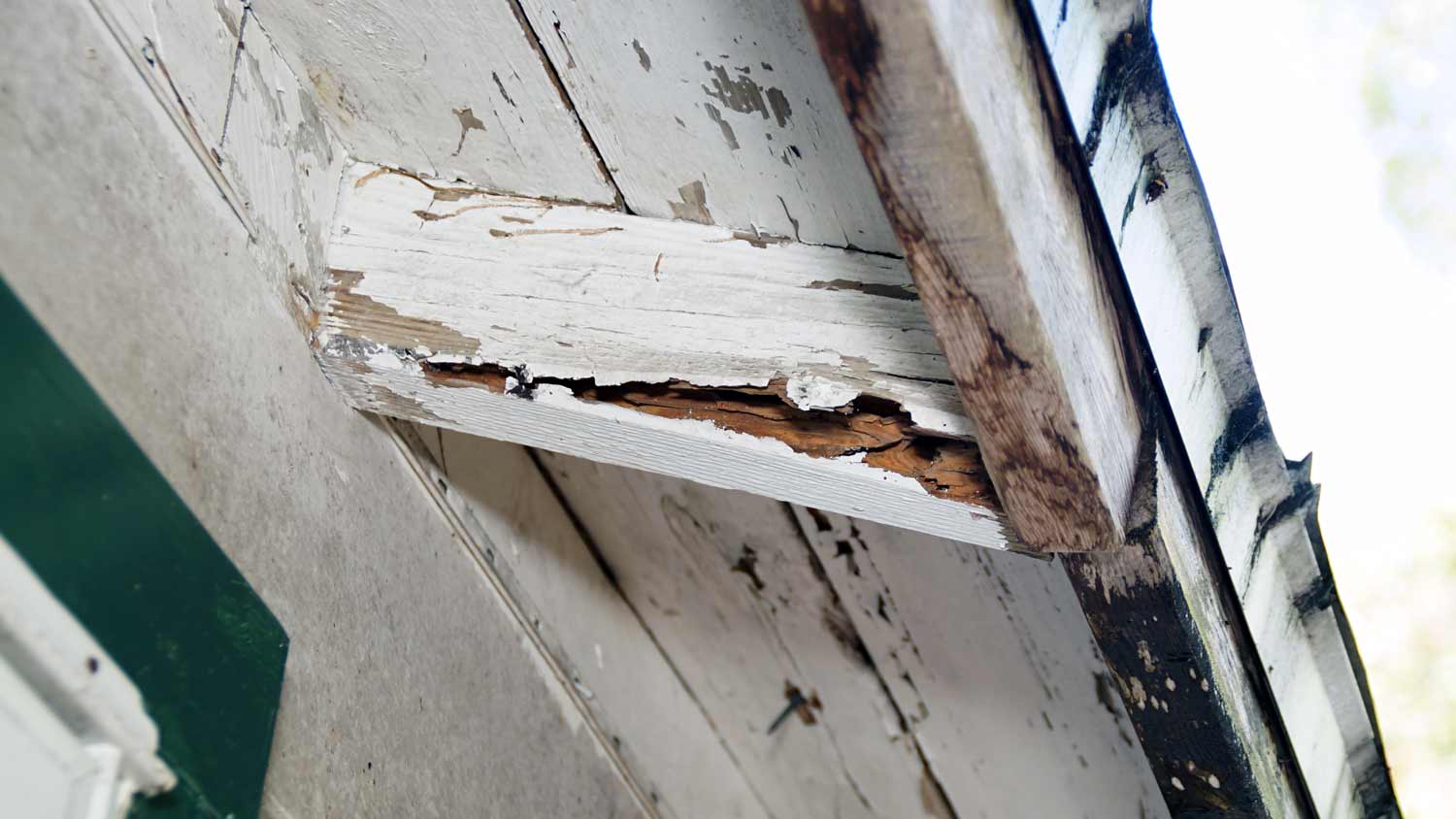
Water damage restoration costs depend on the severity of the problem, the type of water, and the length of time the damage has been occurring.
Wood you like to know the timeline for this potentially serious problem?


Wood rot can cause serious structural issues and safety hazards.
Rot can take as little as a week to develop and several months or even years to fully damage wood.
You can prevent wood rot by using pressure-treated wood and reducing or eliminating exposure to moisture.
Wood rot can weaken and destroy your home’s structural elements, leading to serious safety risks. Whether it’s dry rot or wet rot, this problem can deteriorate any of the wood in your home over time. Our guide explores how long it takes for wood to rot, what factors affect how fast wood rots, and how to prevent rot from damaging your home’s wooden elements.
Wood rot is damage to wood caused by fungal growth. There are two types of wood rot: wet rot and dry rot. Many kinds of fungus can cause wet rot, but dry rot is caused exclusively by a fungus called Serpula lacrymans. Both kinds of rot lead to weakened, deteriorating wood and can spread quickly to nearby wood.

Dry rot looks like fluffy white cotton growing on the wood’s surface, often accompanied by patches of orange, brown, or purple growth. Dry rot causes wood to become brittle and flaky as it deteriorates.
Wet rot grows distinct fungal fruiting bodies on the wood and leaves wood spongy, soft, and prone to crumbling when touched. Both kinds of rot require moisture to germinate, but wet rot requires higher moisture levels than dry rot.
Rot can germinate in as little as seven to ten days after exposure to moisture. Visible signs of damage will develop within a few months, and wood can fully deteriorate in as little as two to three years or as long as a decade, depending on moisture and temperature conditions.
You may be able to prevent rot from spreading if you repair dry rot or wet rot quickly while the damage is still minor. A pro who fixes wood rot can repair or replace rot-damaged wood to keep it from spreading. Dry rot repair costs an average of $1,400, depending on the extent of the damage. If you have minor wood rot damage, a handyperson near you may be able to tackle the job, but for extensive damage, hire a local water damage restoration company.

Moisture exposure is the primary contributing factor to wood rot, but temperature matters, too—the fungus will grow and spread faster in warmer weather. Whether the wood is treated or not also makes a big difference. Pressure-treated wood can still rot, but it’ll take much longer than untreated wood. Painted or stained and sealed wood will absorb less moisture and is less prone to rot.
Fortunately, you can prevent wood from rotting with few proactive steps. Mitigating moisture exposure is the most important step to take. Paint or stain and seal wood, ensure drainage is working properly so moisture doesn’t pool on wood, and keep your outdoor wood features like decks and porches clean and sealed. Using pressure-treated wood will help reduce the risk of rot as well.
From average costs to expert advice, get all the answers you need to get your job done.

Water damage restoration costs depend on the severity of the problem, the type of water, and the length of time the damage has been occurring.

Fire damage restoration costs vary widely based on the extent of the damage. Learn how to assess your home and estimate your total after a fire.

Fire hydrant costs might not be an expense you think about day-to-day, but they’re important to consider for the safety of your home.

Protect your home from water damage with these 10 top tips. Prevent mold, mildew, and other problems that stem from water leaks and plumbing problems.

If your ceiling has water damage, take immediate action to control the situation and avoid further issues. Here’s what you can do.

A small ceiling leak could be the sign of a large problem and potential water damage. Use this guide to learn how to find, fix, and prevent a leaking ceiling.